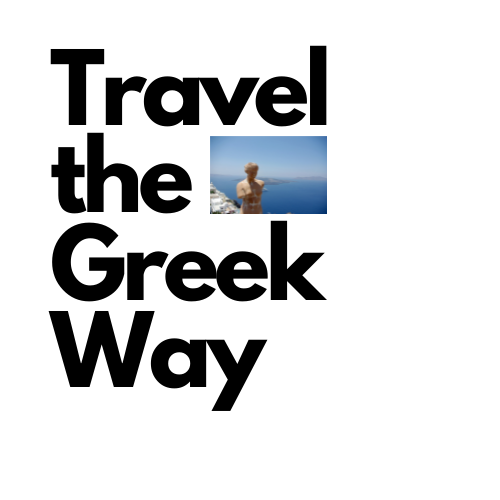Naxos Greece is a beautiful, fertile, and versatile island located in the center of the Cyclades in the Aegean Sea. It remains largely authentic and is ideal for families, outdoor enthusiasts, food connoisseurs, and those in search of serene and peaceful vacations.
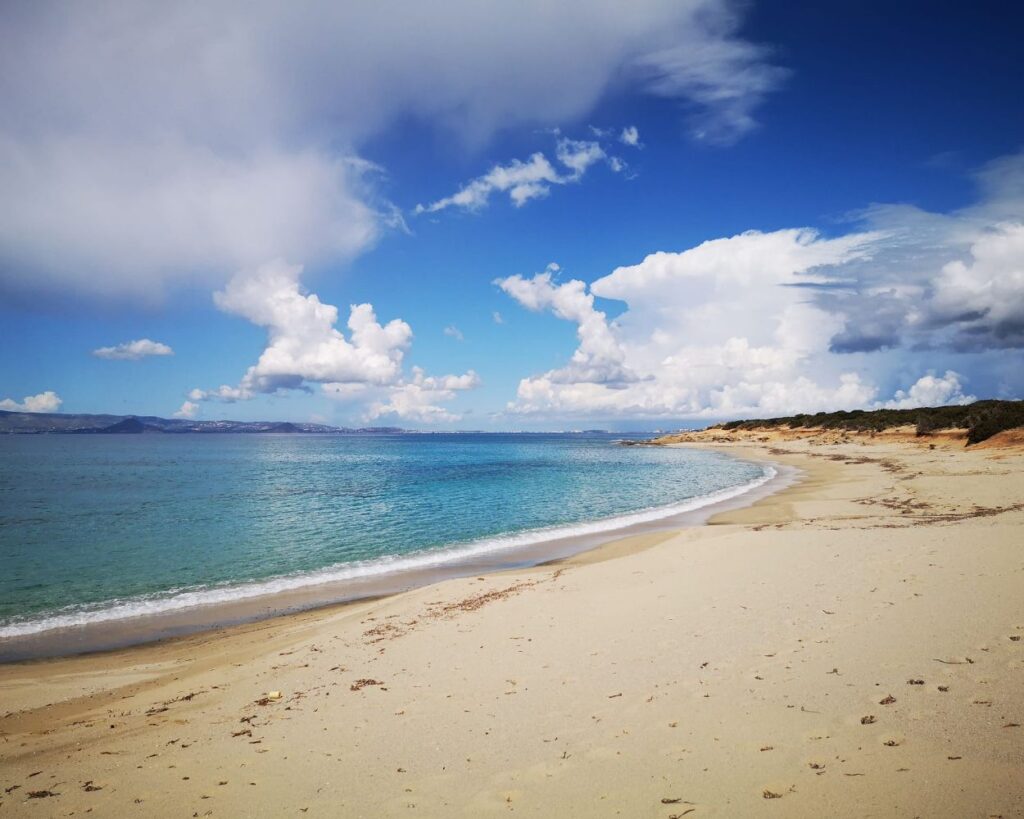
Naxos island offers so many things to do and see: from its whitewashed main town, Chora, with its famous landmark of Portara, to the numerous Venetian castles scattered around the island. From its picturesque small villages to some of the most stunning sandy beaches with crystal-clear turquoise waters – a real paradise for beach lovers in Greece.
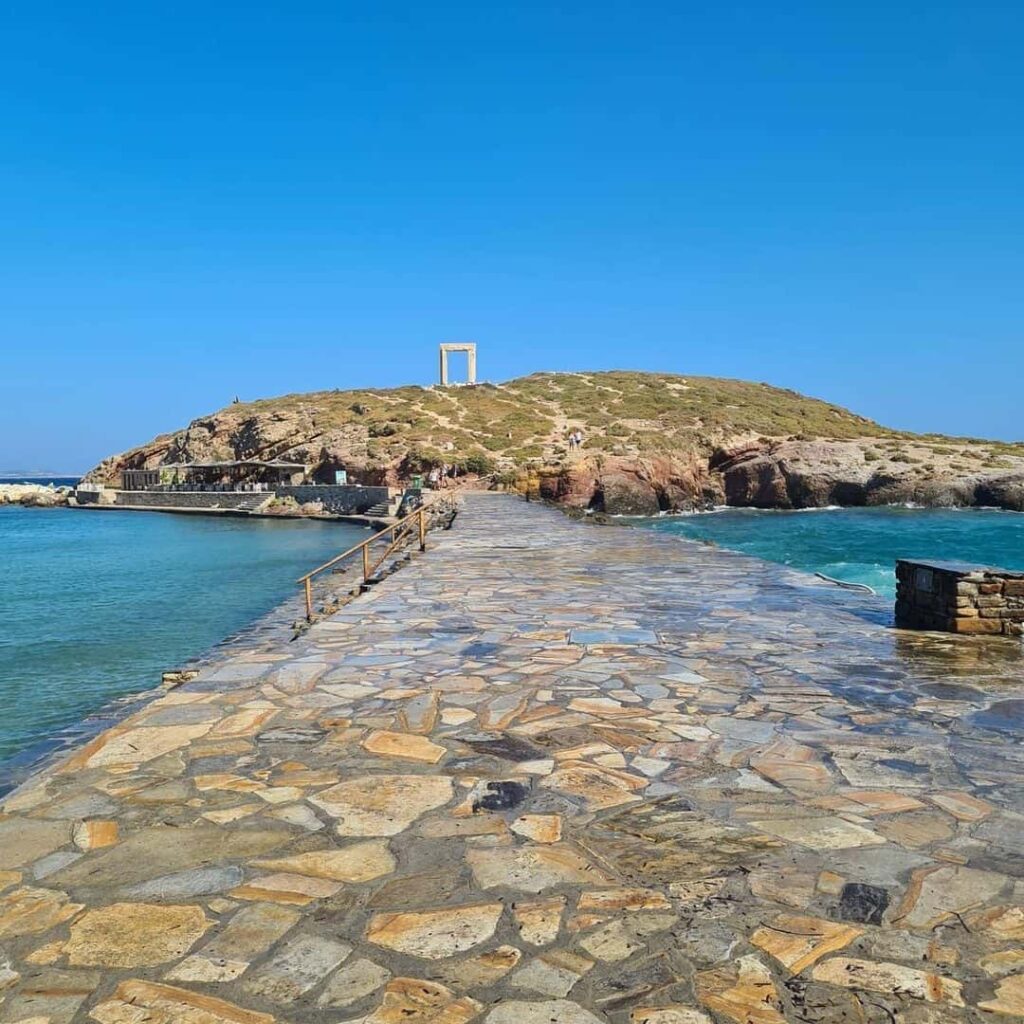
If you are wondering what to do in Naxos Greece, I have put together this travel guide, which covers the best things to see on the island.
Travel the Greek Way is an Amazon Associate and participant in other affiliate programs. I earn from qualifying purchases. Please see my disclaimer/privacy policy for more information.
Top Things to Do in Naxos Greece
1. Explore Chora Naxos
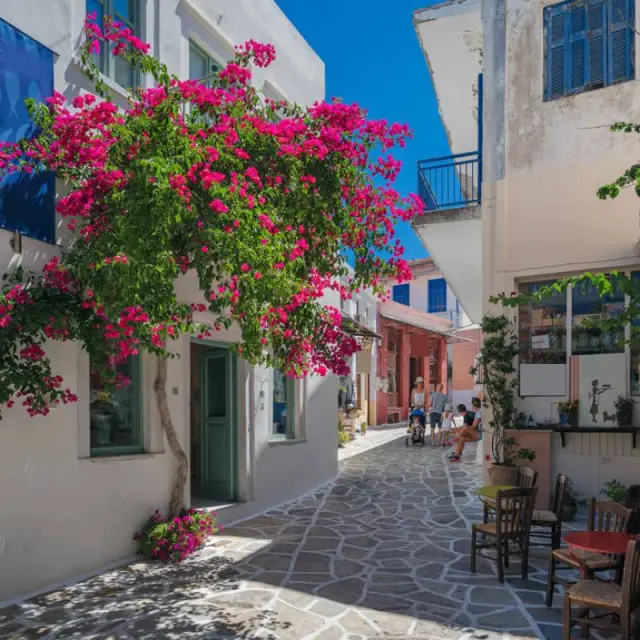
I have a special fondness for Chora Naxos, the island’s main town because it seamlessly blends the charming Cycladic features with medieval architecture.
As you stroll through the coastal area of Chora and the port, you’ll be greeted by an array of cafes and taverns.
And just a stone’s throw away, the sandy beach of Agios Georgios is perfect for a quick dive.
As you begin your ascent toward the Castle (Kastro), you’ll be captivated by the enduring Venetian coats of arms adorning house entrances.
Do not miss to notice the Catholic and Byzantine churches and the picturesque cobblestone alleys adorned with bougainvillea.
Naxos Greece Venetian Castle
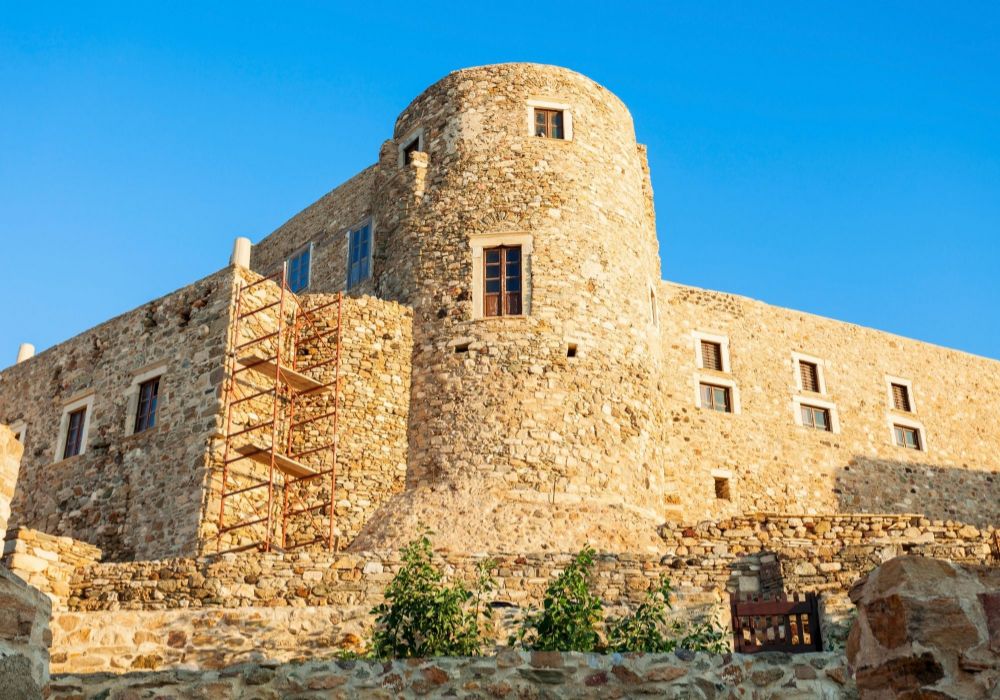
Right above the port of Naxos Chora sits Kastro, a historic labyrinth area that dates back to the 13th century.
As you enter the Kastro, you will immediately notice the cylindrically shaped Krispi Tower, standing four levels tall, with a really impressive view.
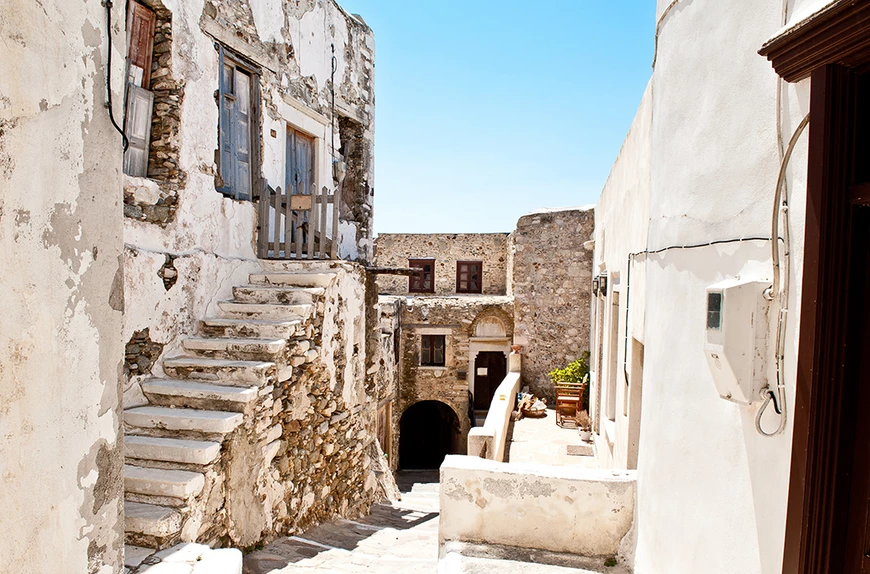
The tower houses the Byzantine Museum of Naxos, and nearby is also the Archaeological Museum which has a free entrance. Inside the castle, as you wander around its labyrinthine alleys, you will come upon the Catholic Church and the Ursuline Convent
For a fantastic view of Chora Naxos from the top of the hill visit Avaton 1739, an all-Day Café & Wine Bar located on the roof of an Old Monastery of Ursuline.
2. Sunset in Portara (Top Activity for Naxos Greece)
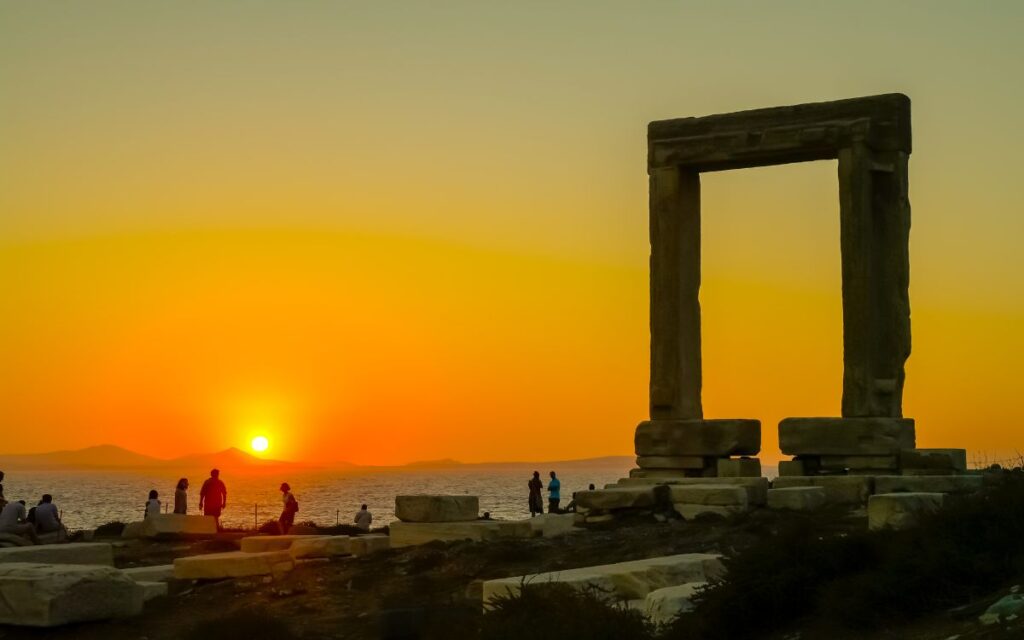
Portara is one of the first things you see from afar when arriving at Naxos port by ferry. The Portara, which means ‘huge door’ in Greek, is the marble gate of an unfinished temple dedicated to the god Apollo in 522 BCE.
The Portara is situated on the islet of Palatia, and you can access it via a stone bridge at any time. However, the best time to visit is during sunset, as it is located westward and offers one of the most magical sunsets on the island.
Since this is a very popular spot on Naxos, you should expect large crowds, especially during July and August.
Cocktail Bar Tip:
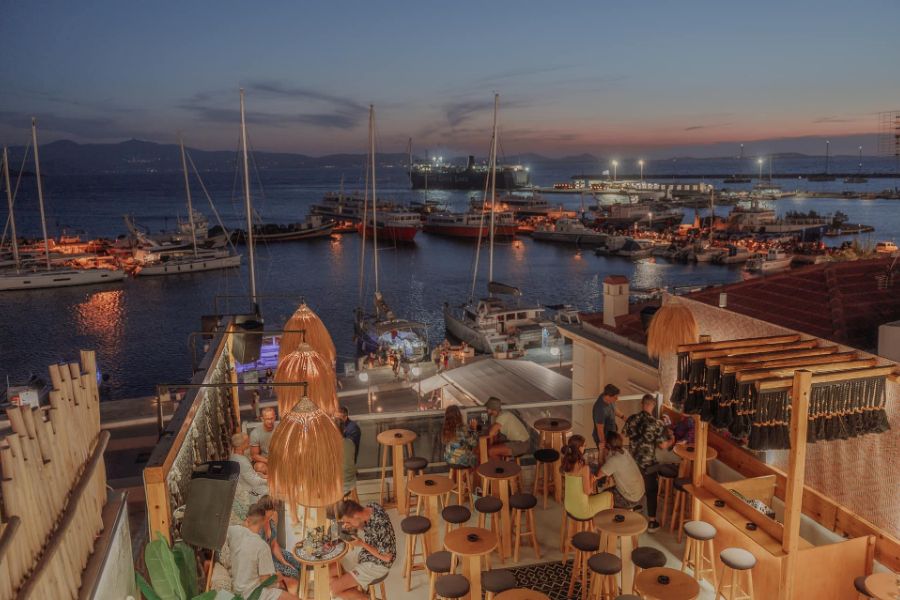
For a romantic sunset alternative, visit Chora Port and discover the charming bar ‘Like Home. It offers a rooftop with a clear view of the port, the yacht marina in the front, and the castle of Chora in the back—a fantastic location.
They have a wine list, a cocktails list, as well as a menu featuring sushi and other delightful options to try.
3. Naxos Greece Beaches
Some of the best beaches on Naxos are located on the west side of the island, including Agios Prokopios, Agia Anna, Maragas, and Plaka. These beaches are all situated one after another in a large bay.
Whichever you choose you cannot go wrong – crystal clear sea, bars and tavernas with sunbeds at reasonable prices, or free areas if you prefer quietness and solitude.
Agios Prokopios
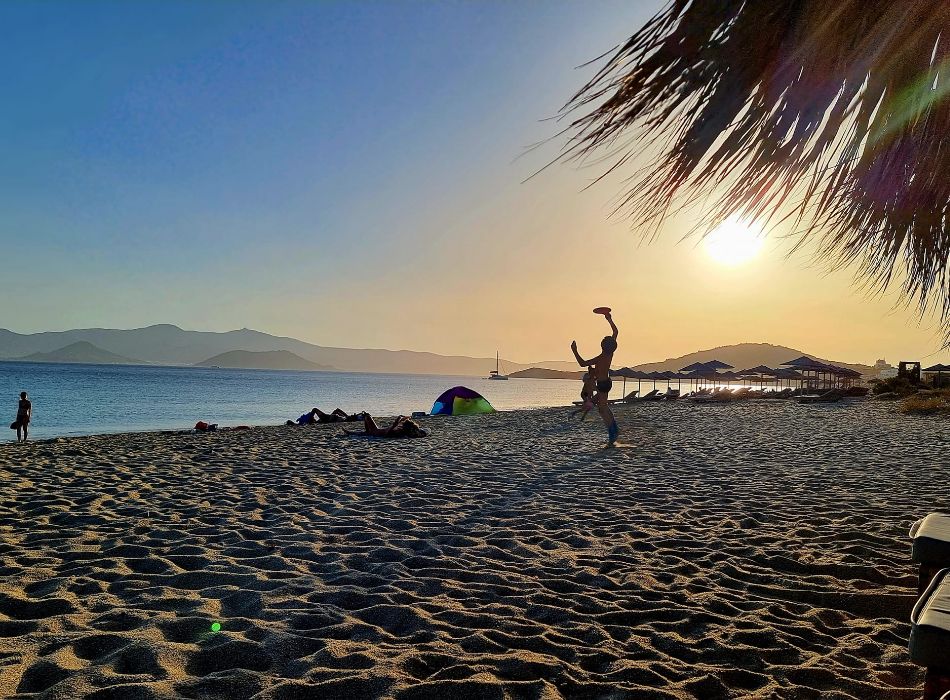
Agios Prokopios, just 5 km south of Chora, is one of the most cosmopolitan places on Naxos with a wonderful sandy beach.
It is a 1.2 km long sandy beach that is protected from the northern winds, making it an ideal choice for families with children. To the north of the beach are some impressive salt marshes that add unique features to the landscape.
Consider staying at the gorgeous Villa Pari Manda in Agios Prokopios, an ideal self-catering accommodation for families and groups of up to 11 people.
Agia Anna
Agia Anna is not only my favorite beach but also one of the most popular beaches in Naxos, situated 7 km from Chora. Essentially, it continues from Agios Prokopios to the southwest.
This blue flag-awarded sandy beach is partially organized, offering sunbeds, umbrellas, restaurants, and beach bars.
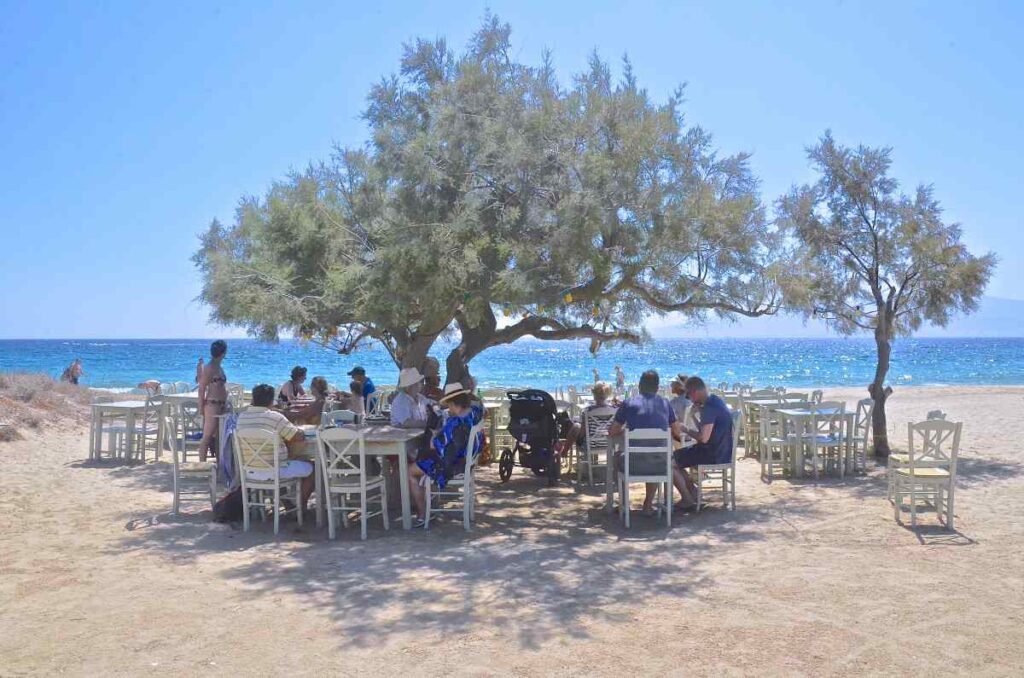
- Best tavern on Agia Anna beach: Paradise Tavern is a family-run small business, located at the unorganized and peaceful part of the beach
- Scuba Diving Tip: Book a scuba diving tour to explore the marine life of Naxos Greece.
Plaka
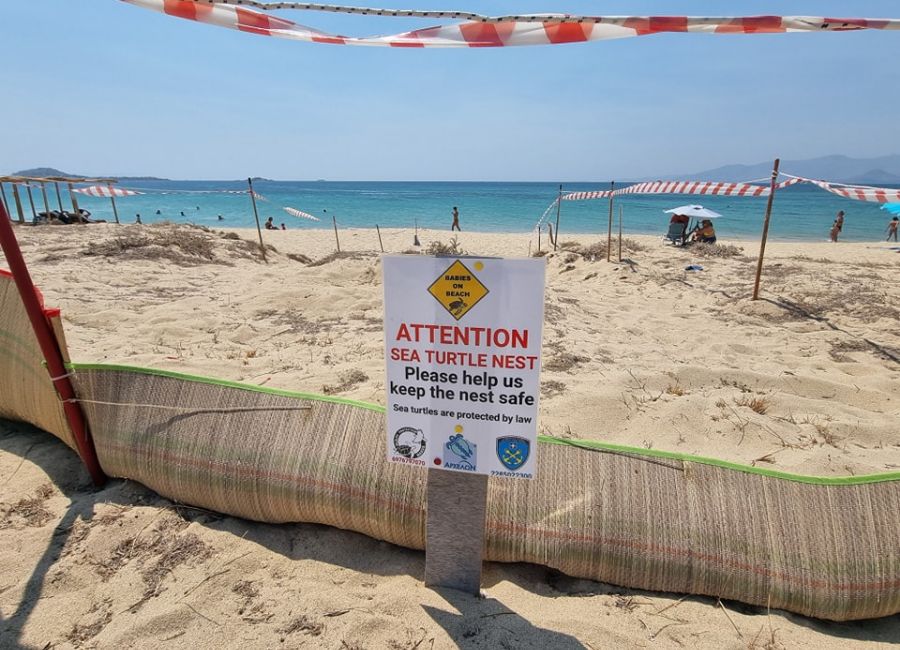
Plaka Beach is just 8 km south of Chora with impressive dunes. It is organized with sunbeds and umbrellas in certain areas and is an ideal choice for families as the beach is protected from the winds.
It is also one of the nesting areas of the protected turtles of Careta Careta. Please be cautious and avoid disturbing the nests.
Parthena and Mikri Vigla
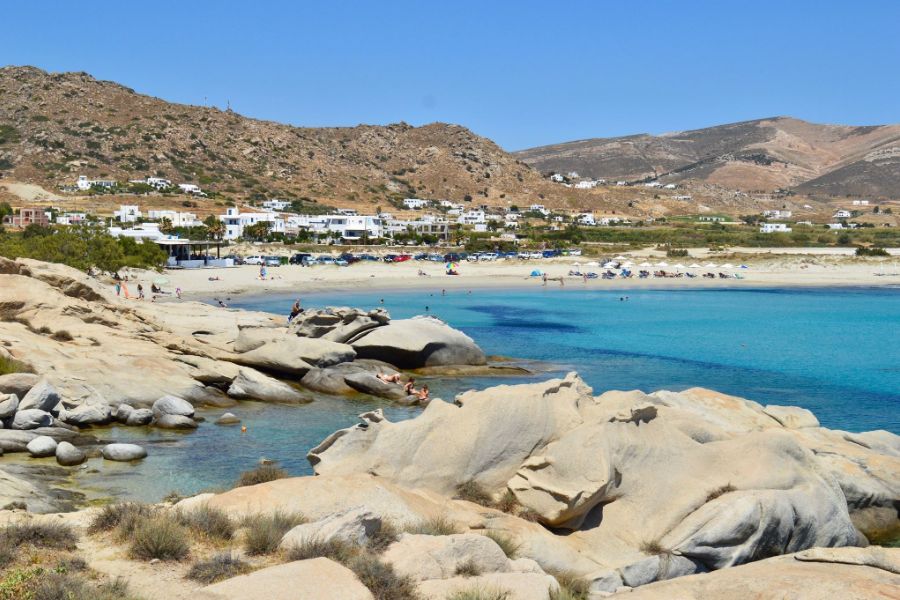
They are a single beach, divided in two by a rock, 16 km southwest of Chora. Parthena is ideal for kite surfing and windsurfing enthusiasts. On the other hand, the endless sandy beach of Mikri Vigla with its calm and shallow waters has a more family-oriented character.
4. Archaeological Sites of Naxos Greece
Naxos played an important historical role not only in the Cyclades but also in the broader Greek region. That’s why the island boasts incredible historical and archaeological monuments, as well as museums, where you can explore and gain insight into Naxos’ history.
Sanctuary of Dionysus
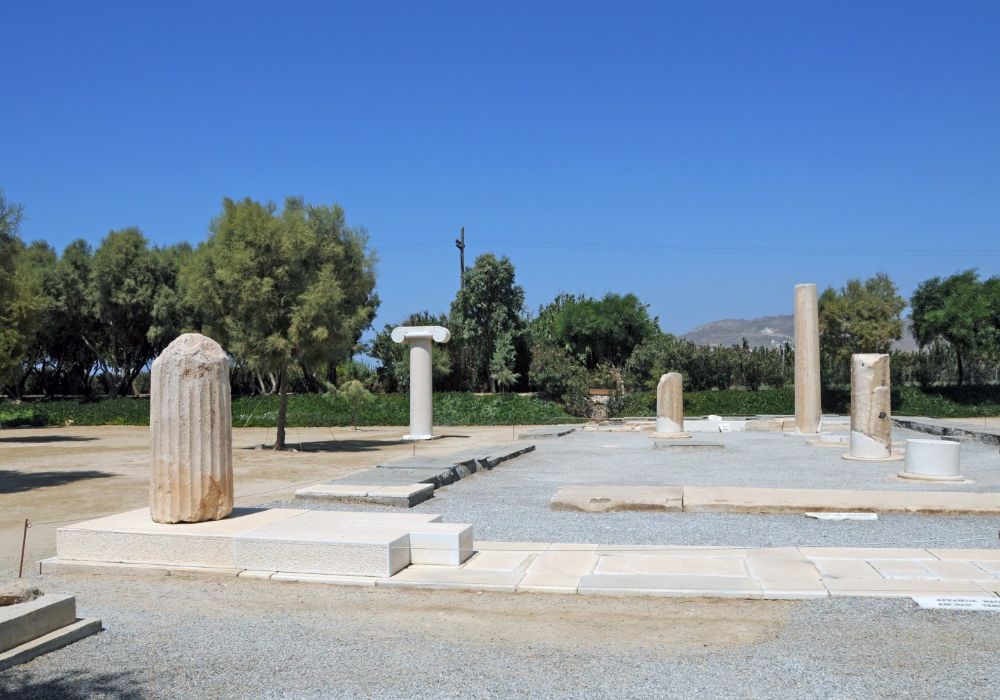
Dionysus, the protector god of Naxos, had his sanctuary in Iria, located approximately 3 km south of Chora. This sanctuary, a significant construction for its time, was built between 575 to 550 BCE and is surrounded by vineyards, olive trees, and wild sycamore trees. It’s open daily from 8:30 AM to 3:30 PM, except for Tuesdays when it’s closed. The entrance ticket is €3.
Zeus Sanctuary
According to Greek mythology, baby Zeus, the king of all Greek ancient gods, was born in Crete but was raised in the cave on Mount Zas. The sanctuary is located at the summit of Mount Zas, and while the hike is challenging, the breathtaking vista from the sanctuary makes it well worth the effort.
Temple of Demeter
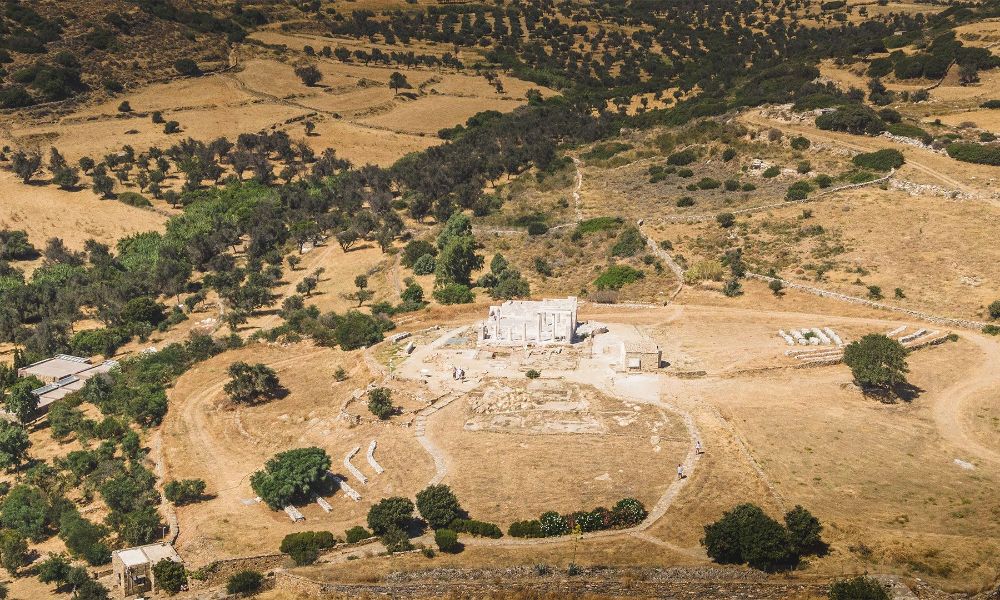
The Temple of Demeter, located near the village of Sagri, was constructed between 530 and 520 BCE, nearly a century before the construction of the Parthenon. It was crafted from exquisite Naxian marble and featured Ionic-style columns.
This temple was dedicated to Demeter, the goddess of the harvest, sowing, and fertility, and was a place of worship for both Demeter and her daughter, Persephone. The sanctuary is historically associated with the Eleusinian Mysteries and the artifacts and findings from the site are displayed in a museum built on the archaeological site.
Admission to the museum is free but it is not wheelchair friendly.
Kouroi of Naxos

A Kouros (Kouroi in plural) is an archaic Greek statue of a young man, typically depicted standing and often naked, dating from the 7th to 6th century BCE. In Naxos, you can explore three different Kouros statues: two of them are situated in the Melanes area, specifically in Flerio, about 9 km from Chora. The largest one can be found at the top of the seafront village of Apollonas, in the northern part of the island.
5. Picnic at the Routsouna Waterfalls
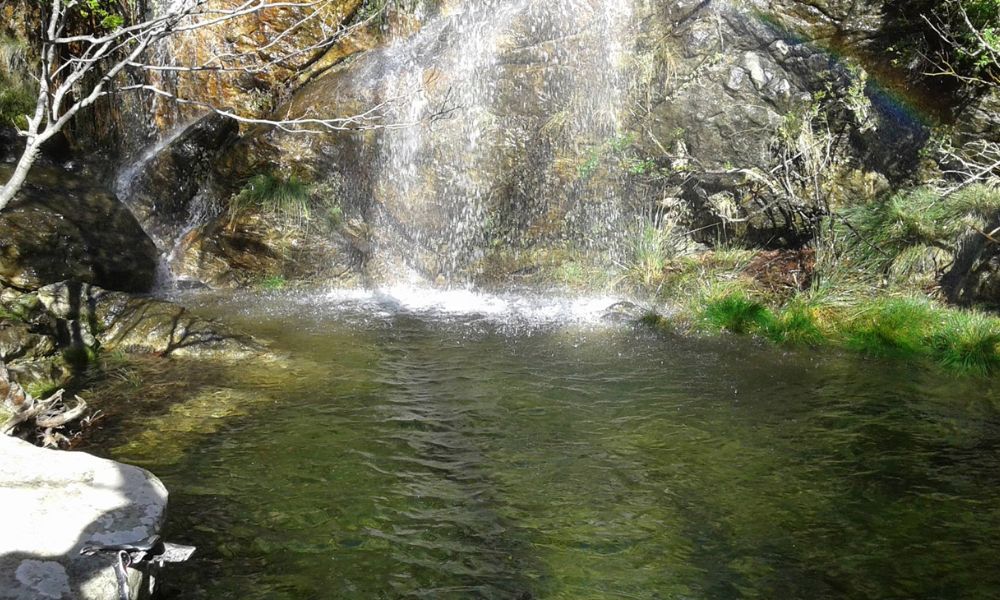
To reach the Routsouna waterfalls, head to Keramoti village where you’ll find a sign indicating that the waterfalls are 3 km away. Follow the path, and you’ll see more signs guiding you to the waterfall, making it easy to locate. During the summer, you can even swim in the small lagoon! Be sure to wear anti-slippery shoes and bring water and food with you, as there are no facilities available on-site.
Additionally, I recommend visiting the Olive Mill Museum in Keramoti village; it’s a great experience.
6. Traditional Villages of Naxos Greece
One of the best things to do in Naxos Greece is to drive around its wonderful, traditional villages, and walk its narrow picturesque alleys.
Apiranthos
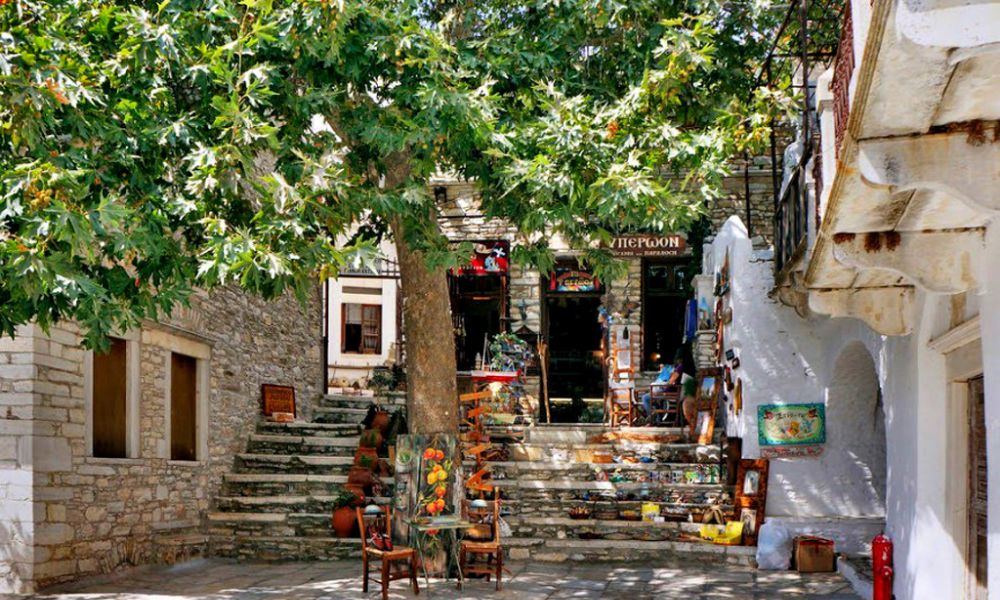
Untouched by the passage of time, Apiranthos is adorned with stone-built houses, beautiful squares, and narrow alleys paved with marble. Nestled at an elevation of 650 meters on Fanari Mountain, some of its cobblestone alleys are merely a meter wide, giving the village an authentic and timeless character.
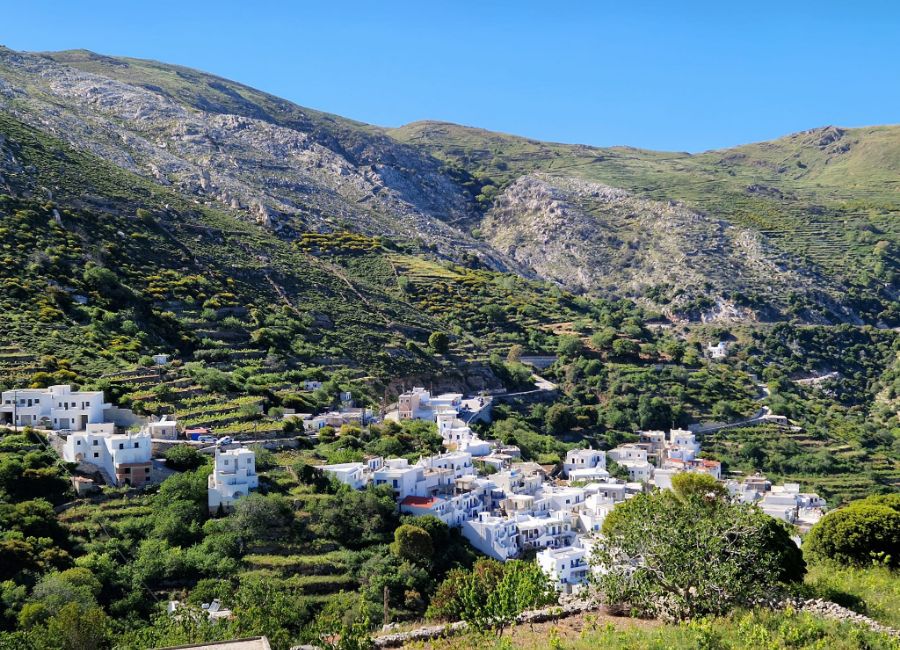
And if the quaint taverns shaded by plane trees and picturesque houses aren’t enough to captivate you, Apiranthos offers something remarkable: it hosts five museums, a rarity for a small Greek village. These museums are all conveniently located in the heart of Apiranthos and include:
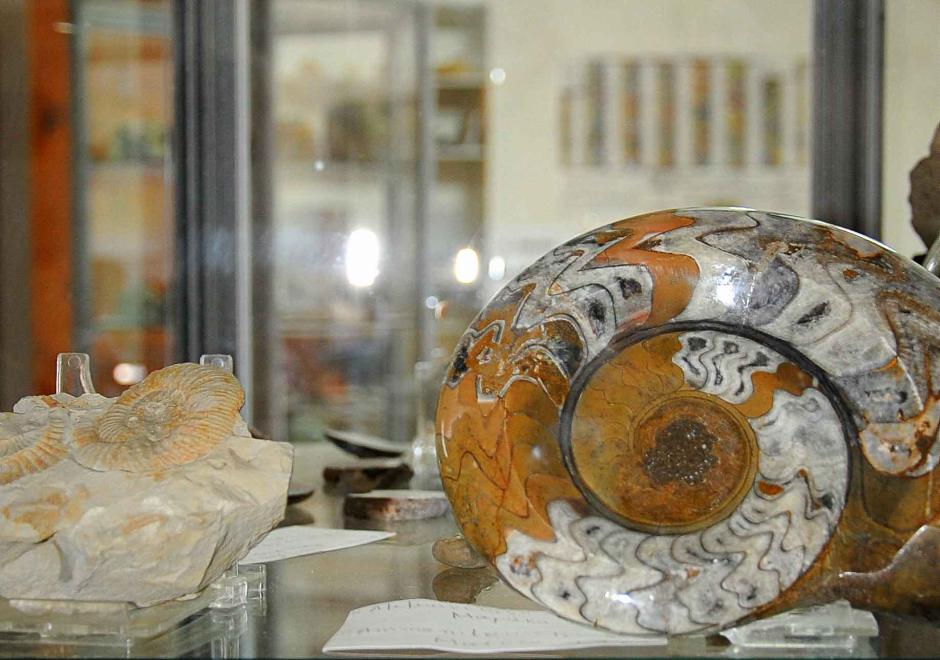
- Archaeological Museum with findings from prehistoric Naxos times (It is not always open if you want to visit call +30 22850 61725).
- Geological Museum, with more than 2500 rare rocks displayed (€2 entrance).
- The Natural History Museum of Apiranthos has a large natural aquarium, as well as a wonderful collection of 265 shells from the island.
- The Museum of Fine Arts displays the works of 75 artists (painters, sculptors, engravers and potters). The entrance ticket costs €2.
- The Folklore Museum consists of three rooms (kitchen, workshop, and bedroom) and a courtyard. It is a reconstruction of the interior of a village house, just as it was 100 years ago. The entrance ticket costs €2.
Nearby is located the Paleochristian Church of Panagia Drosiani (6th c.), one of the most beautiful and old churches in Greece.
For the best sunset views with amazing food, in Apiranthos go to Rotonda Restaurant.
Filoti (Most Popular Village in Naxos Greece)
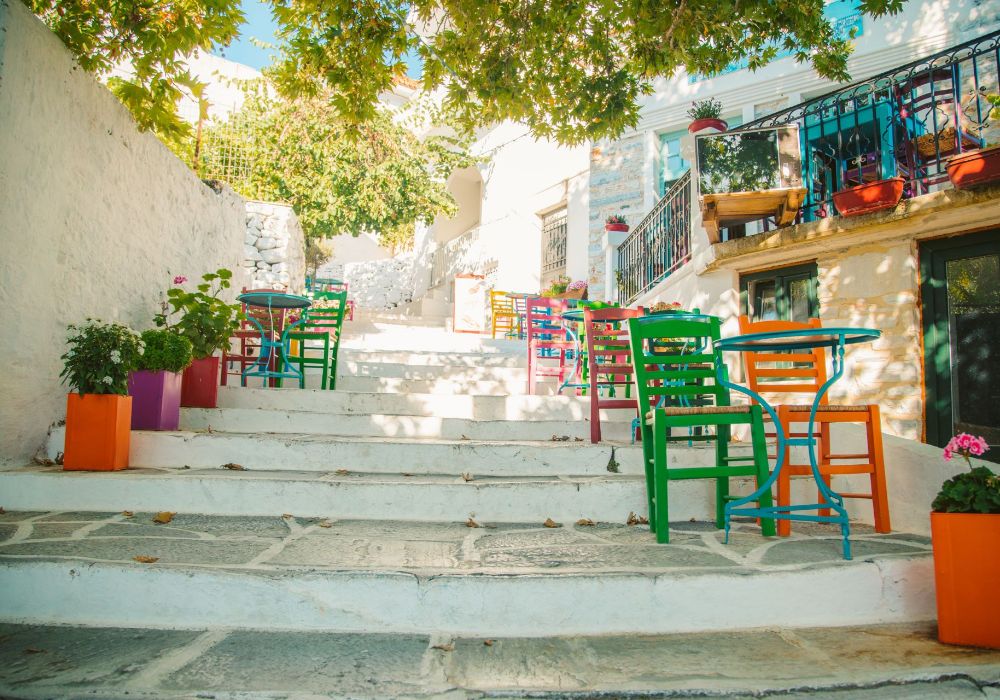
Filoti is a charming mountain village situated on the slope of Mount Zas at an altitude of 400 meters. It boasts cube-shaped houses and narrow cobbled alleys. In Filoti, you’ll discover Panagia Protothroni, a Byzantine church dating from the 9th to 10th century. This church is the largest Byzantine church on Naxos and features excellent frescoes. The village is shaded by plane trees, creating a delightful atmosphere for exploration or enjoying a coffee with the locals.
Sagri
Don’t miss the village of Sagri, which comprises three districts (Upper, Lower, and Kanakari) and is home to Venetian towers such as Bazaios Tower and Sommaripa, as well as traditional windmills.
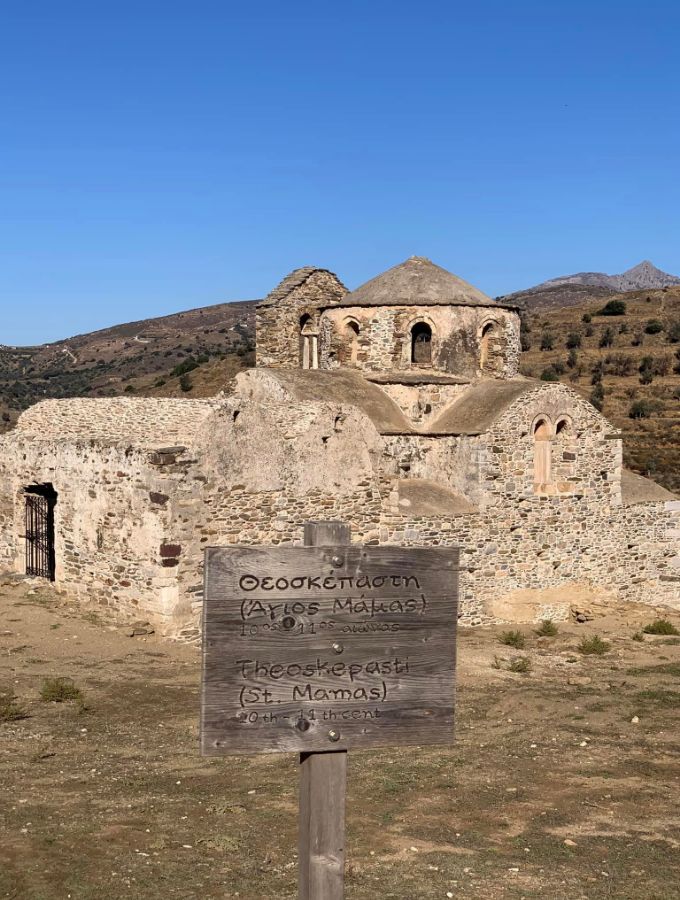
The plain of Kato Sagri is often referred to as ‘Little Mystras’ due to the large number of Byzantine churches it houses, with the most significant being Theoskepasti or Agios Mamas, dating back to the mid-9th century. Agios (Saint) Mamas is the protector of the shepherds.
Chalki (Halki)
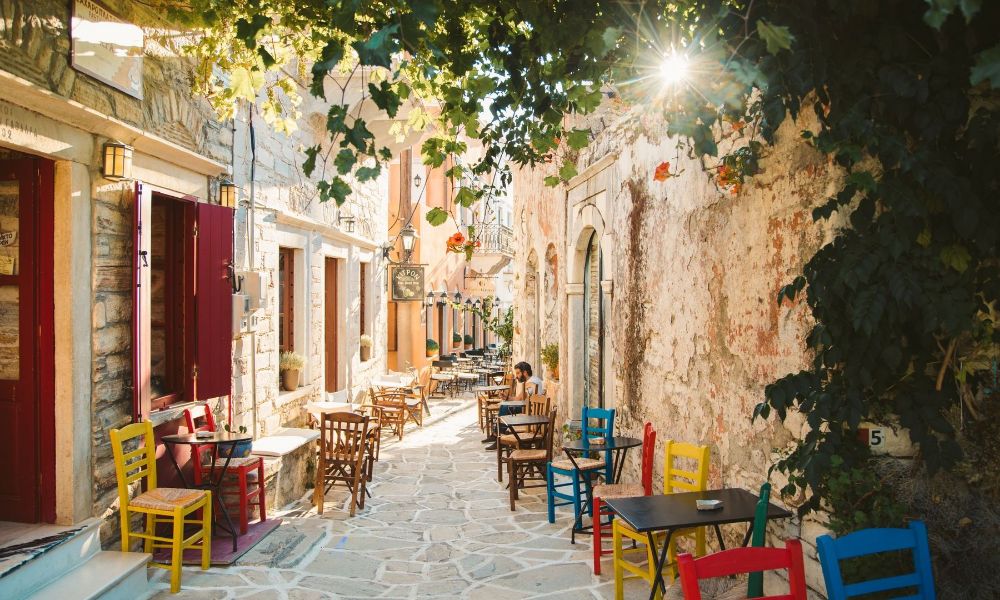
Chalki is a picturesque and traditional village known for its stone houses. Once, it served as the capital of Naxos Island. Located 17 km from Chora, in the Traagia basin, the village is surrounded by olive trees and stands out for its magnificent architectural style.
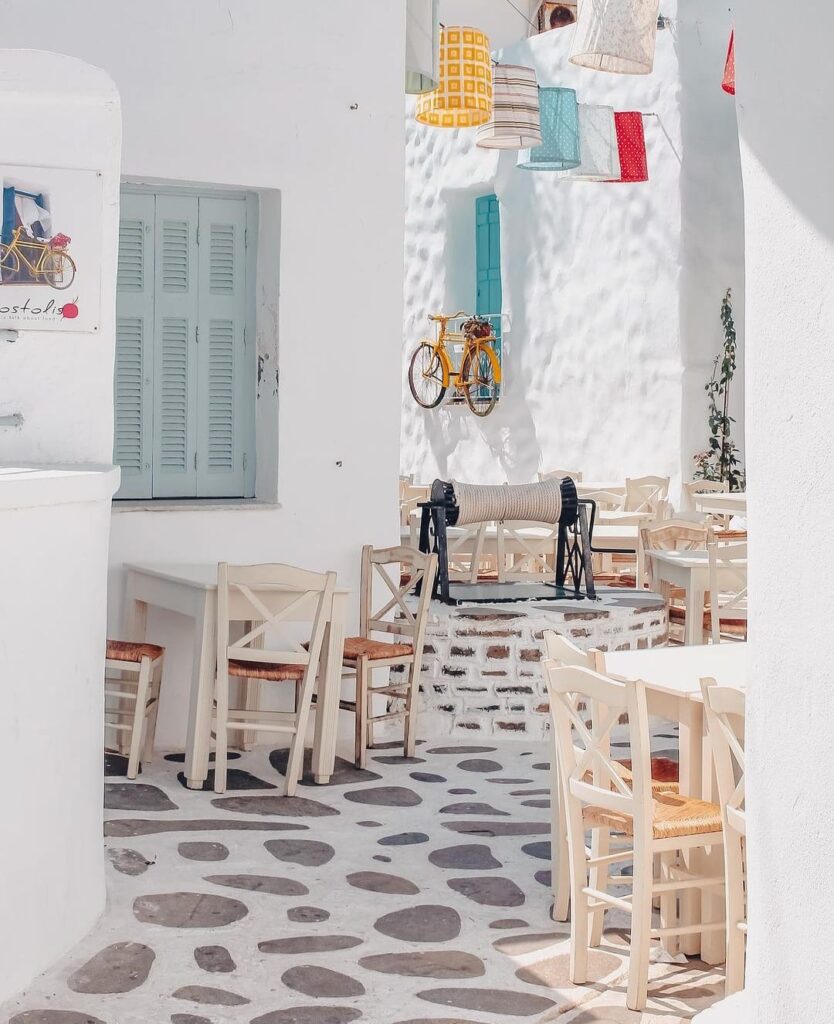
When you visit Chalki, be sure to seek out the Tower of Barozzi/Gracia, which has been renovated and is inhabited by descendants of the Barozzi family. Additionally, explore the impressive temple of Panagia Protothroni. Chalki offers many cafes and a few taverns where you can enjoy a delightful lunch break.
7. Hike Mount Zas
Naxos boasts two high mountains, Zas, standing at 1004 meters, and Fanari at 908 meters. To reach these peaks, you’ll pass by springs, rivers, ancient settlements, plains, valleys, and groves of orange, lemon, and olive trees. This route offers a truly beautiful experience for those who love walking in nature.
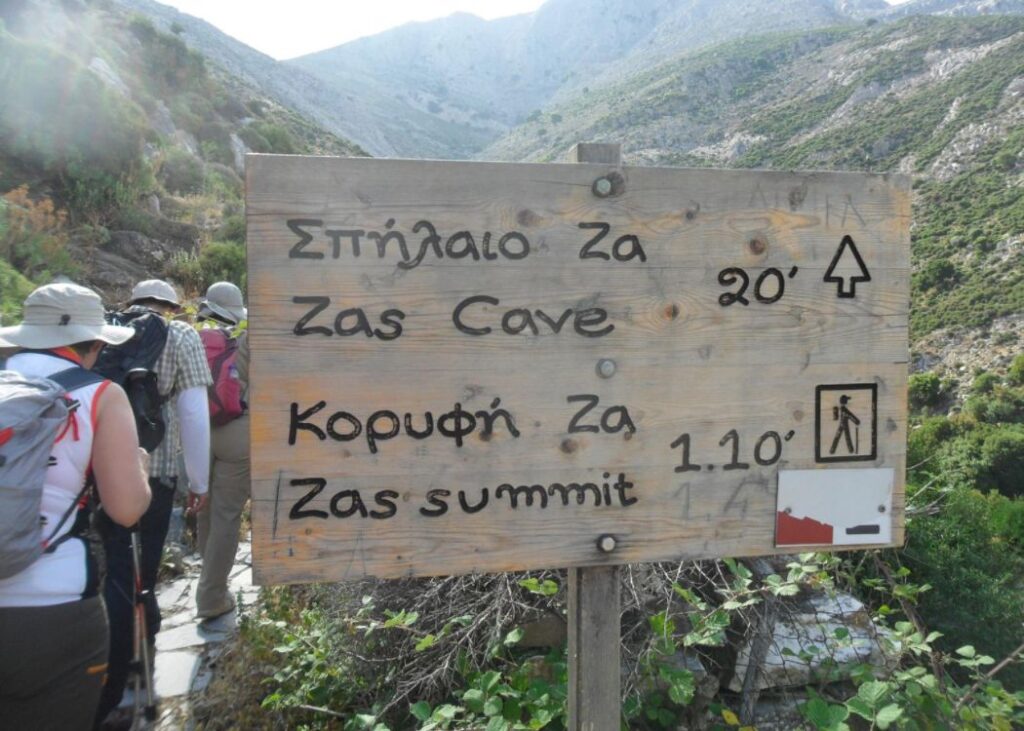
A popular yet challenging trail on Naxos is a well-marked 12.8 km loop starting from Filoti. The first half of the trail is well-signposted, guiding you to the cave. However, beyond the cave of Zas, you should be prepared for a less-defined footpath that can become steep at times.
Since much of the hiking is done in areas without shade, it’s essential to wear sturdy hiking boots, a UPF sun hat and apply organic sunscreen. Finally, always carry lots of water with you.
8. Indulge in Local Cuisine
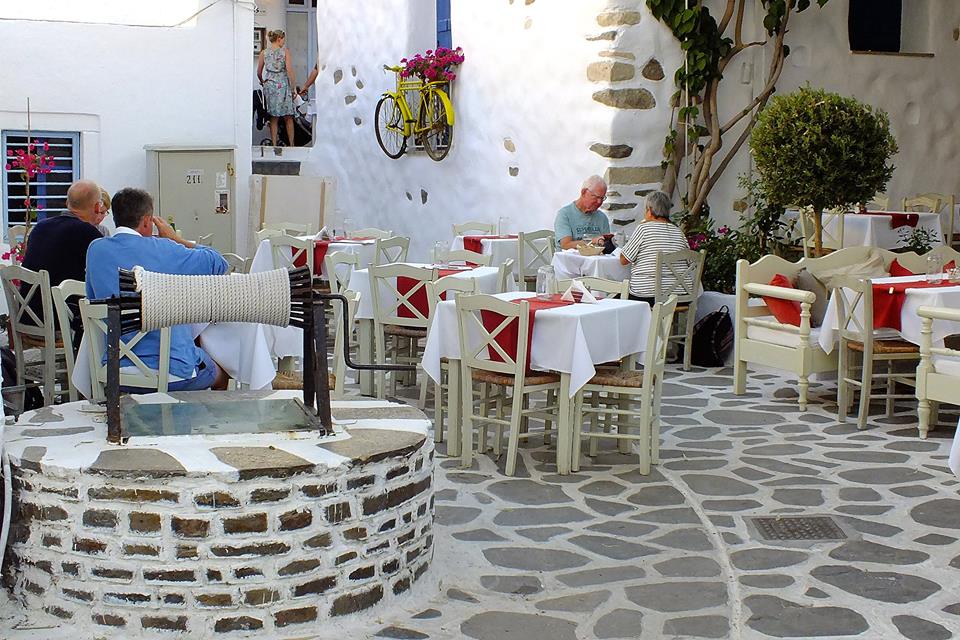
Naxos Greece is famous for its delicious various kinds of cheese and potatoes!
Some of my favorite, authentic restaurants that I recommend are:
- Maro’s Tavern
- Harry’s in Eggares. Doesn’t get more traditional! It’s one of the best on the island.
- Stella’s Tavern (imagine a Greek grandma cooking for you, no menu – she just tells you what she cooks) in Eggares
- To Elliniko, Nostimon, and Apostolis taverns in Naxos Chora
- Cafe Grecco (in Chalki) – the kindest staff and great food!
Don’t forget to taste the famous local liqueur made from the aromatic leaves of the citrus, distilled according to traditional family recipes. Would you prefer a guided tour of the distillery, including a tasting? Book a Citron tasting tour here.
9. Cedar Forest of Alykos Beach
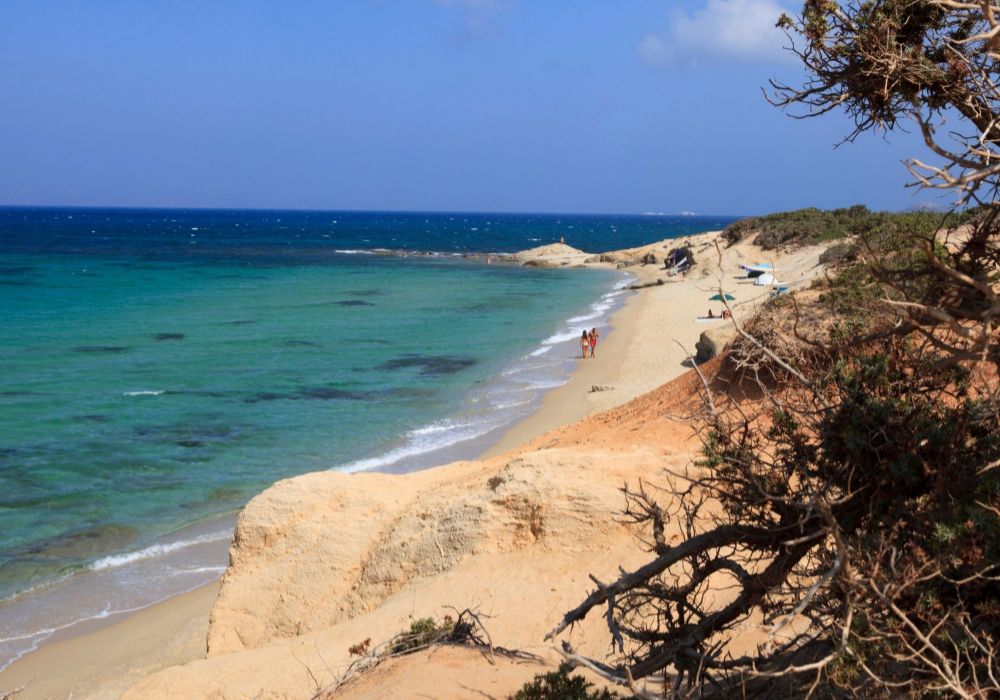
Alykos Beach is one of the island’s most impressive beaches, situated 17 km from Chora and near the settlement of Pygaki. This beach stands out for its wild, remote, and peaceful nature, remaining unorganized with no beach bars, umbrellas, or sunbeds. There is parking available around the abandoned hotel near the main beach of Agios Georgios.
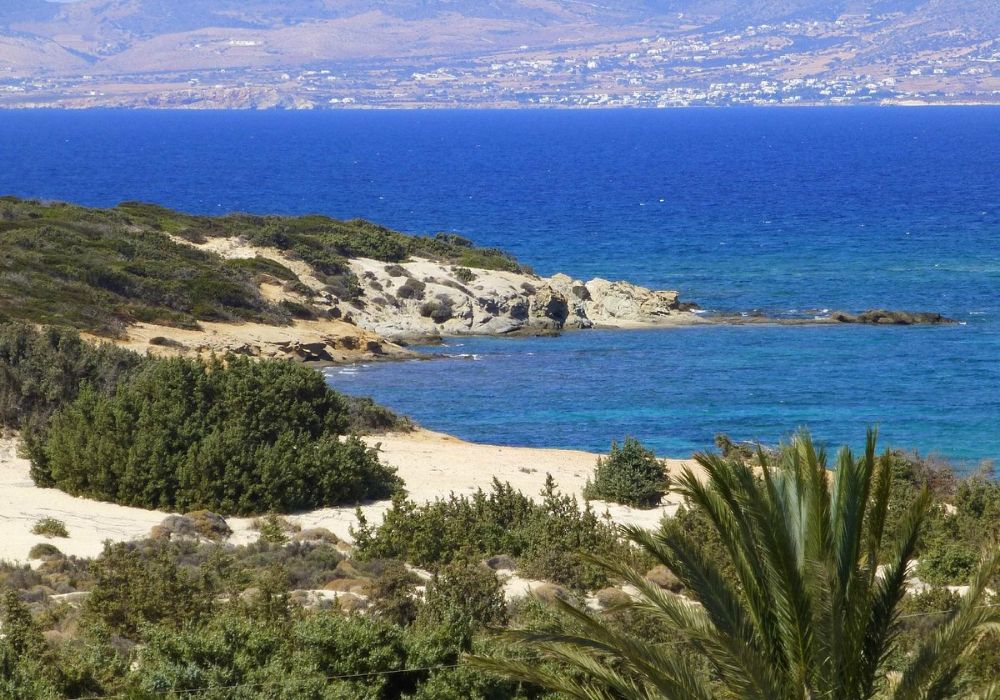
Above the small beach with its white sand and turquoise waters, you’ll find a cedar tree forest that provides natural shade to visitors. The Alykos cedar forest is one of the largest and densest in Greece, covering an area of about 800 acres. Access is straightforward, as you can reach it via an easy dirt road that continues from a provincial road.
10. Monasteries of Naxos Greece
Naxos is famous for the large number of Greek Orthodox and Catholic churches and monasteries on its territory.
The Monastery of Agia
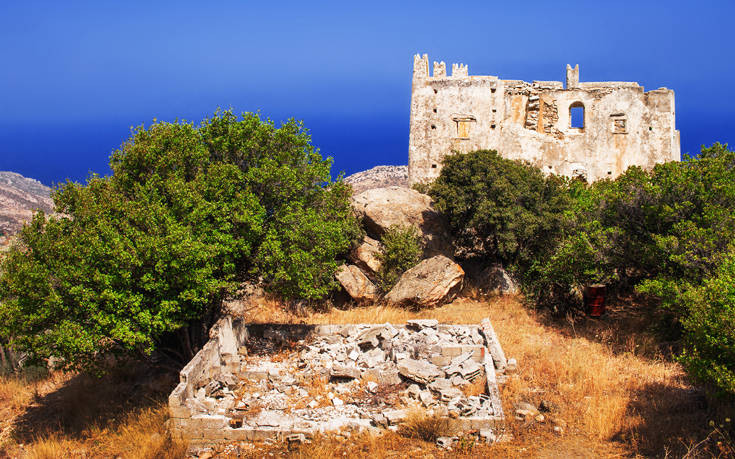
The Tower and the Monastery of Agia are situated in northern Naxos, just 6 km from Apollonas village. Within the courtyard, you’ll find a spring surrounded by giant century-old plane trees and lush vegetation. This site is dedicated to the Virgin Mary and is celebrated on August 15, the day of the Assumption of the Virgin Mary, with a grand festival.
The Holy Monastery of Fotodotis
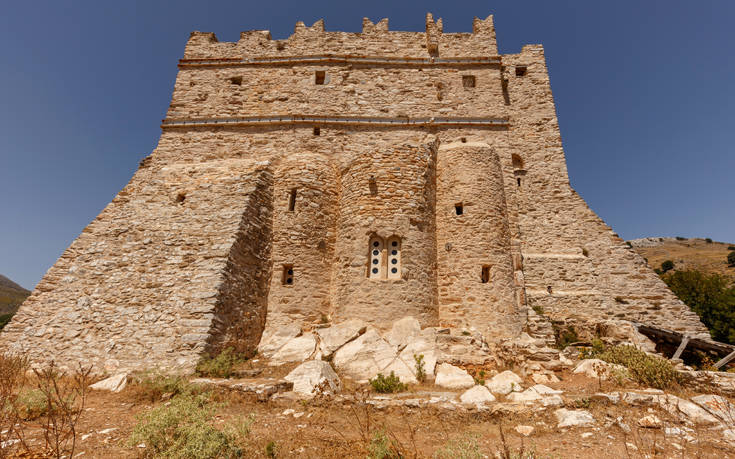
The Holy Monastery of Fotodotis is situated slightly north of the village of Danakos. This monastery holds a special place as it is not only the oldest but also perhaps the most important castle monastery on Naxos.
Perched at an altitude of about 500 meters, the monastery is enveloped by fig trees, vineyards, and a centuries-old plane tree gracing its entrance. The monastery was constructed on the remains of an early Christian three-aisled basilica dating back to the 6th century.
Where Best to Stay in Naxos



The Hotel Grotta (budget, family-friendly, breakfast) is on a picturesque hillside offering breathtaking views of Naxos Chora and the renowned ancient Portara. Apart from its comfortable and spacious rooms with stunning sea-facing sunset views, Grotta is also a haven for food enthusiasts.
Key highlights include its prime location and scenic vistas, an extensive breakfast featuring local delicacies, as well as amenities such as a pool, hammam, hot tub/Jacuzzi, and sauna.
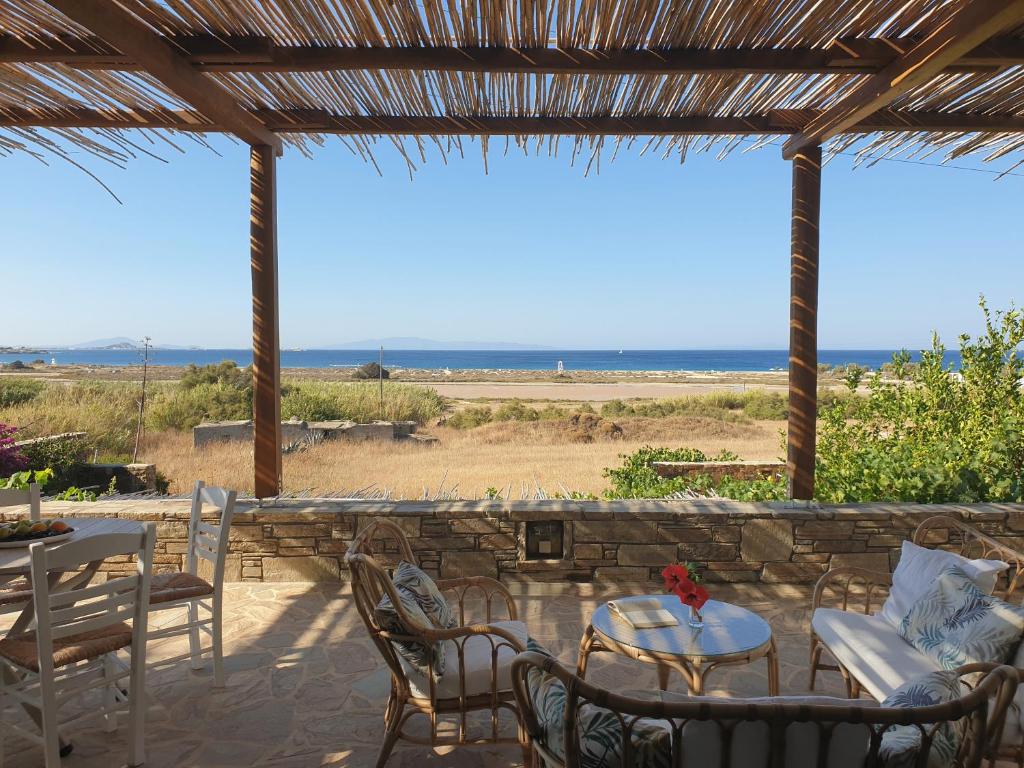
If you prefer beachfront accommodation, especially if you’re traveling with small children, then you’ll love the seafront KYMA Apartments – Naxos Agios Prokopios. These apartments offer unobstructed sea views of Agios Prokopios sandy beach and feature a thoughtful blend of modern amenities and traditional elements.
FAB PROPERTIES
Check out availability and prices for the best hotels and apartments in Greece on Booking.
How to Get to Naxos Greece
You can get to Naxos either by ferry or flying.
Athens to Naxos Ferry
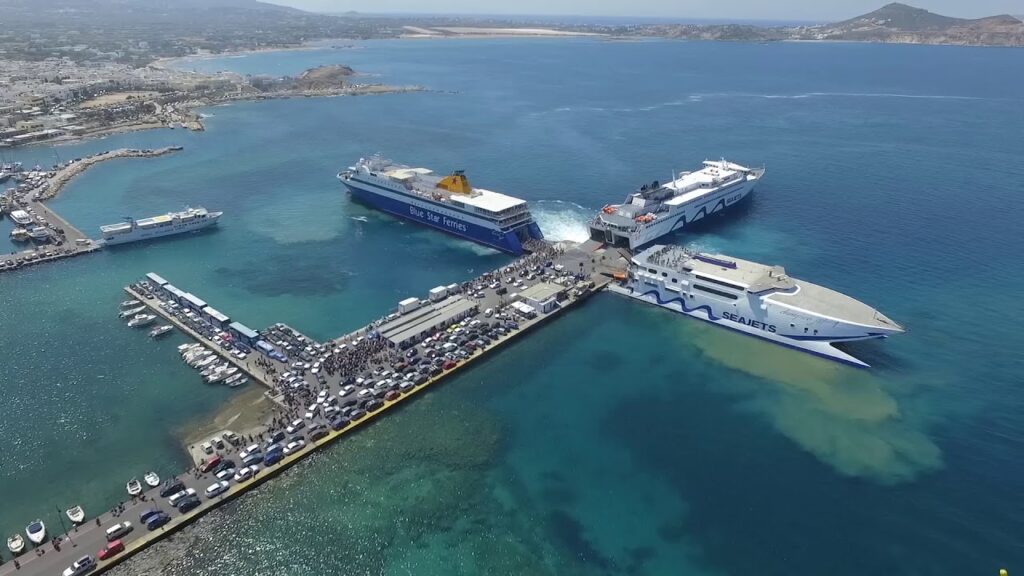
You can go to Naxos through any of the 3 ports of Athens:
- Piraeus, Athens’ main port, offers 3-4 daily ferry services to Naxos during the summer, with travel times ranging from 3 to 6.5 hours, depending on the vessel. In the winter, there is at least 1 daily ferry to Naxos from Piraeus.
- Rafina, Athens’ smaller port, located about an hour from the city, provides up to 3 daily ferry crossings to Naxos, with travel times ranging from 3.5 to 4.5 hours.
- Lavrio, Athens’ second smaller port, also has a weekly ferry to Naxos, with a longer journey of 8 hours
Naxos Airport
You can take a 40-minute flight to Naxos from Athens Airport throughout the year. Just keep in mind that there is a weight limit for your luggage on the flight.
Paros to Naxos Ferry (or other islands)
Naxos is well-connected by ferries to Paros, Santorini, and other Cycladic islands. During peak summer months and Easter, ferries tend to fill up quickly, so it’s a good idea to book your seats well in advance. You can check the timetable and make ferry reservations to Naxos with FerryScanner.
Suggested Itinerary: 10-Days Athens, Santorini, Naxos, Mykonos.
FAQ for Visiting Naxos
When is Best to Go to Naxos?
Naxos is at its liveliest between May and October, making it a popular choice for many visitors. However, Naxos is also a great destination in the winter, as there are plenty of enjoyable activities to experience on the island. With around 18,000 permanent residents, you’ll find hotels, cafes, and taverns ready to accommodate any visitors.
July and August are the hottest and busiest months for all Greek islands. If you prefer fewer crowds and more moderate prices, consider visiting in May, June, or September/October for the best combination of pleasant weather and reasonable costs.
How long should you stay in Naxos Greece?
Due to its size and the numerous attractions it offers, it’s recommended to stay on Naxos for at least 3-4 days, and ideally a week, to fully explore the island. Naxos provides amazing experiences for any visitor, whether you’re a family, a couple, or a solo traveler.
Is There Nightlife in Naxos?
While the nightlife in Naxos may not match the exuberance of Mykonos or Santorini, it comes alive during the summer months. If you’re in the mood for dancing the night away at a nightclub, Naxos offers several options, and there are plenty of bars to suit your music preferences.
Is Naxos Island Expensive?
No, it’s not. The most expensive islands in Greece are Santorini and Mykonos. In contrast, the rest of the islands and the Greek mainland generally offer quite reasonable price
What to Wear on Naxos Island?
If you are visiting the Cyclades in July and August, be prepared for meltemia, the northern winds, which can be quite strong. Also, evenings can get chillier, so it’s a good idea to have a light jacket with you.
Packing list to Greece: a dedicated post with tons of information so that you will not forget anything important at home!
How to Get around Naxos?
While there are frequent buses that connect well to various areas around the island, for those seeking more adventure and independence, I would suggest renting a car, especially during the hottest months (July-August).
A car with good air conditioning and shade from the sun can be particularly advantageous. Having your vehicle means you can explore remote areas at your leisure, without the stress of catching a late bus.
Is Naxos Safe for Solo Travelers?
Greece is a perfectly safe country for everyone regardless of age, gender, race, religion, or sexual orientation. In addition to that, Greek people are gene-programmed to be hospitable and are always eager to offer directions to your destination or any other advice, so ask freely.
Plan My Trip to Greece
Do you need a custom travel itinerary or a transfer within Greece? Are you traveling solo, with your family or friends and need a tailor-made multi-day tour or a transfer?
If yes, please visit my dedicated Plan My Trip Page for a personalized itinerary!
For more travel to Greece tips and beautiful destinations in the Greek islands please join my FREE Facebook Group or SUBSCRIBE to my YouTube & TikTok channels for amazing videos of Greece! Until then happy and safe travels, Evgenia.
How to Get to Athens Port (Piraeus) from Athens Aiport

- Bus: If you are arriving at Athens International Airport you can travel straight to the port by taking the X96 express bus (€5.5, children <6 yo, free entrance), which departs every 40 minutes and the average trip lasts 1 hour – runs 24/7.
- Metro: (€9) is easily found across airport arrivals (blue line – M3) going directly to Piraeus port. The average trip to Piraeus lasts 1 hour.
- Taxis are available in front of the airport (around €45 to Athens, €55 to Piraeus (depending on the traffic in Kifisos), and take up to 3 or 4 people with small luggage)
- Rent a car with Discover Cars for reliable, new cars at affordable prices
- You don’t like driving but love hassle-free solutions? Book a Private transfer with an English-speaking driver from Athens International Airport to Piraeus Ferries, or anywhere else in Greece.
My Most Popular Posts
Essential Travel Resources for Greece
- ‘Hello’ and ‘Thank You’ in Greek: “Ya sou” and “Efharisto”
- Booking.com: I use Booking.com mostly for Europe.
- All-Inclusive Resorts in Greece
- FerryScanner to book ferries to the Greek Islands
- Rent an Affordable Car in Greece
- Athens Metro Website (timetables and ticket info)
- Trains (Hellenic Train)
- Public Buses KTEL
- Get Your Guide: For all your day or multi-day tours and city guide needs, I use Get Your Guide
- Emergency Numbers Anywhere in Greece: AMBULANCE 166 – FIRE 199 – POLICE 100– EMERGENCY NUMBER 112
